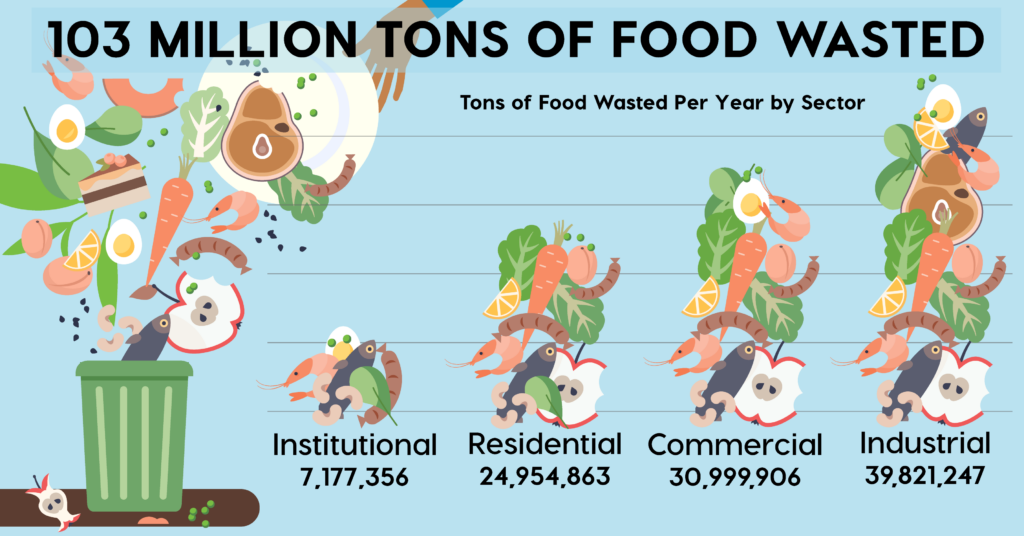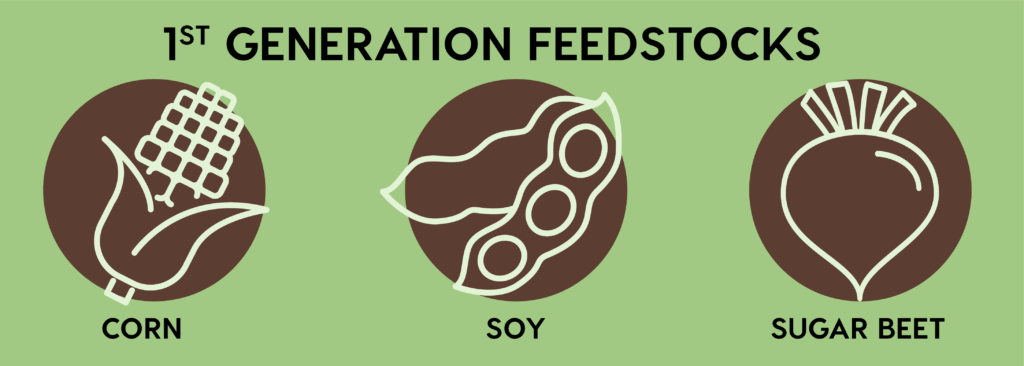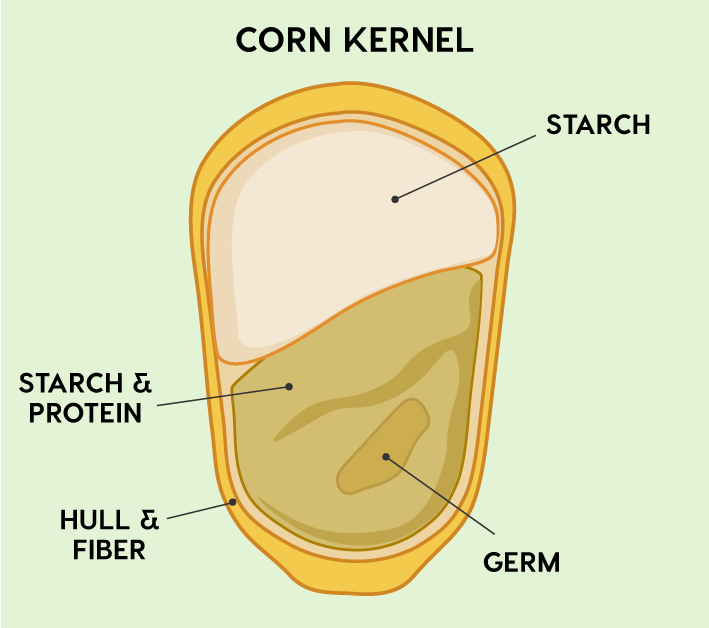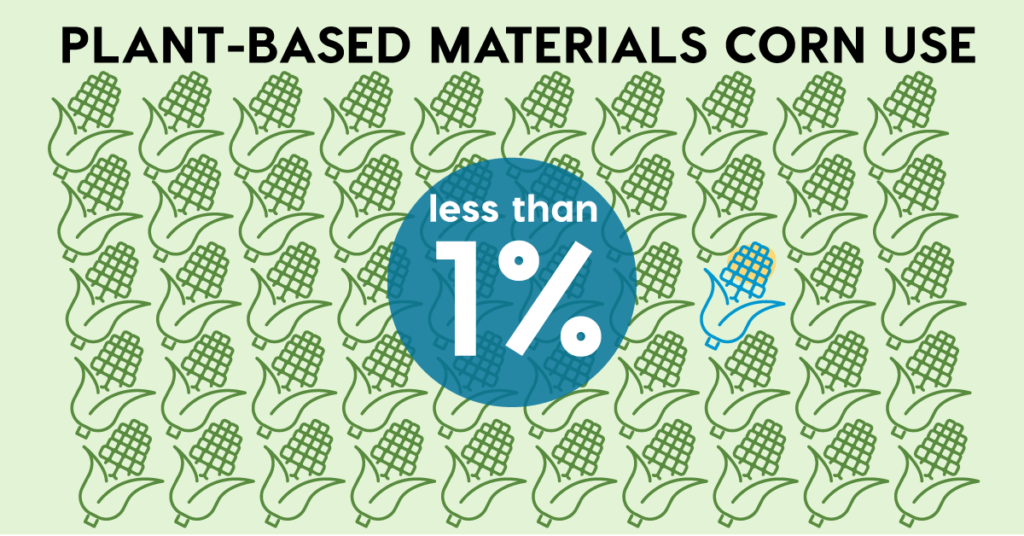12/21
If we make more products from plants, are we compromising our ability to feed a growing population?
A common myth surrounding plant-based products is that using plants to make products will compete with the availability of food crops and threaten food security. Our latest blog post will help clarify the ways that sustainable products and a growing food supply can go hand-in-hand.
The Food Waste Problem

In 2018, nearly 103 million tons of food was wasted in the U.S. To feed a growing population, it is critical to address inefficiencies in the food system to minimize food waste. The reality is that the world produces enough food to feed everyone, but these inefficiencies mean that the food does not always reach the people who need it. It is critical to improve delivery of the food we already produce to our growing population to ensure that people are fed and well-nourished. We can meet the food and nutritional needs of society while also using renewable, plant-based inputs to manufacture more sustainable products and materials.
3 “Generations” of Feedstocks

Importantly, a variety of renewable inputs can be used to create different plant-based products. Common food/feed crops (or “1st generation” feedstocks) like corn, soy, or sugar beet are commonly used to make plant-based products. These feedstocks are readily available, efficient, and cost effective. There’s also growing interest in the use of 2nd generation feedstocks like agricultural waste materials and non-edible crops like grasses and 3rd generation feedstocks like algae to make plant-based products. This wide selection of inputs doesn’t place too much of a burden on any one feedstock – instead, it gives chemists and manufacturers who produce plant-based products many options to pursue.
Let’s Look at Corn

By focusing on a common 1st generation feedstock, we can see how it’s possible to produce plant-based products without compromising our ability to feed a growing population. Let’s look at corn, the most widely grown row crop in the U.S. During the wet milling process, a corn kernel is separated into its component parts – starch, germ, fiber, and protein. Each component has different uses. In many plant-based products, only the starch component of corn is needed while the protein and other components are incorporated into other applications such as animal feed, oils, and other products.
One bushel of corn is able to serve as a reliable feedstock for many different end uses. Corn starch can be used to manufacture everything from medicines to cleaning products and cosmetics to organic acids and chemical intermediaries. The abundance of sugar and starch derived from corn provides opportunities to use corn for both food and biobased products simultaneously, meaning it’s not a choice of one versus the other.
Using America’s Crops

Only 10% of America’s total annual corn crop is used for all food uses, such as starches, oils, and sweeteners, to meet domestic and international demand. Most corn is used for animal feed (39%) or ethanol (34%). At the same time, less than 1% of the total industrial corn market goes to plant-based material uses. In fact, with current corn yield improvements, supply is outpacing demand. Almost 1.5 billion bushels of corn remained in U.S. ending stocks at the end of 2020. And the same goes for soybeans, another common feedstock. The most significant uses of soybeans are animal feed and food, with less than 2% going to industrial product uses. Statistics like these remind us that increased production of plant-based products is a sustainable opportunity that exists to leverage surplus feedstocks.
According to the nova-Institute, “At present, the world is mainly short of protein and not of carbohydrates such as sugar and starch. This means that there is no real competition with food uses, since the valuable parts of the food crops still flow into food and feed uses.”
The Plant Based Products Council encourages continuous efforts by the agricultural industry to sustainably and efficiently produce and use crops for each purpose, along with creating improvements to food systems to eliminate waste. Opportunities exist to feed our growing population all while creating more sustainable products for our planet.
